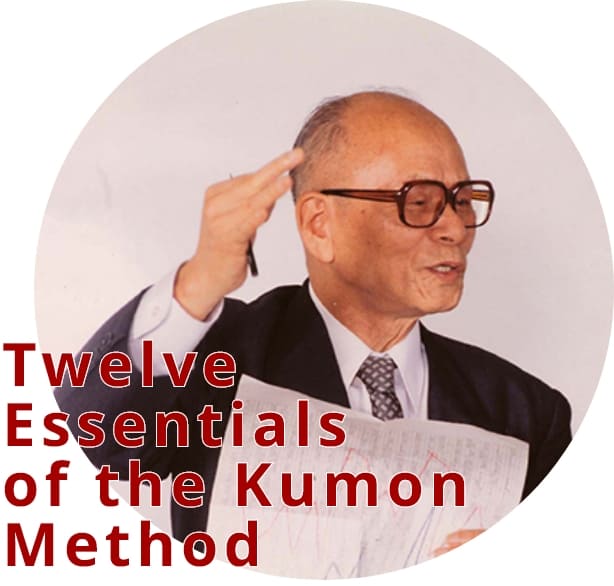Part 8 Comfortable Starting Point

For students newly enrolled in Kumon Centers, we first give them a Diagnostic/Placement Test to decide from what level and what number of worksheet they should start. We do not set these starting points where students wish to have them. They start from a point where the content is work that they would have already covered at school and they should know well. An initial goal of our learning method is to enable students to solve, without making careless mistakes, the questions they deem the simplest and easiest. Once students have undergone this learning exercise, they discover that the questions that first seemed difficult to them are actually not as hard as they thought. This is what happens to most students who have worked on these exercises.
Toru Kumon
When students begin study with the Kumon Method they are always given what we call a "diagnostic," or
"placement," test. Using this test, we decide the starting point for students based on analysis of their
academic ability at that point in time. This analysis includes looking at factors such as: the number of
correct answers they got, and the time it took them; whether they used the correct method to do the
questions; and the reasons for any mistakes they made. We do not allow the student's age or grade level to
inform our decision regarding the starting point. For example, a student who is in the 5th or 6th grade of
elementary school, or even a junior high school student, might begin their study from elementary school
1st or 2nd grade level. In the case of math, this would mean starting from addition and subtraction, but
this does not mean that the student is not able to add or subtract. It is because we place importance on
students first being able to do the work comfortably, without it being a burden to them.
By starting from a point well below grade level, for example, even a child who had been receiving poor
results at school, can for some time attain 100 per cent continuously at Kumon. In this way, even children
who disliked study up to the time they started Kumon can experience the feeling of being able to do
something if they try, and thus begin to enjoy their study and gain motivation and self-confidence.
At the same time as helping them gain motivation and confidence, by starting from a level that they can do
comfortably we set out to build students' concentration, speed, accuracy, and perseverance. Take for
example a comparison between a child who begins study from a difficult starting point, and a child who
begins study from a comfortable starting point. Even though the child who started from the difficult
starting point is studying higher level worksheets in the beginning, the child who started from the
comfortable starting point will advance more quickly, and the gap between the two of them will soon
narrow. Once the gap has closed and the two students are studying the same level, in the vast majority of
cases the student with the comfortable starting point who has caught up goes on to advance beyond the
student with the difficult starting point. More than academic ability itself, this is the result of the
ability to concentrate and work quickly and accurately for a certain period of time that the student with
the comfortable starting point had built up.
When deciding the starting point one more thing that we need to do is to set up a "study projection" with
goals for how far we expect the student to advance (or indeed how far the Instructor feels he or she
should have the student advance), by half a year, one year, and two years after beginning study. Using the
study projection as a basis for discussion, the Instructor then has an in-depth consultation with the
child and his or her parent or guardian in order to establish a study plan. At Kumon we refer to this as
"sharing the study projection." Sharing the study projection in this way allows children to understand
that even though they are studying at a certain level now, they have a clear goal of up to where they will
advance to, and what kind of skills they will have developed, after half a year, one year, and two years.
When children are striving toward a goal their eyes shine with enthusiasm, and this is the driving force
that keeps them going as they advance further and further.
This is why at Kumon when deciding on a starting point we never forget Toru Kumon's words—"no starting
point without a study projection."
